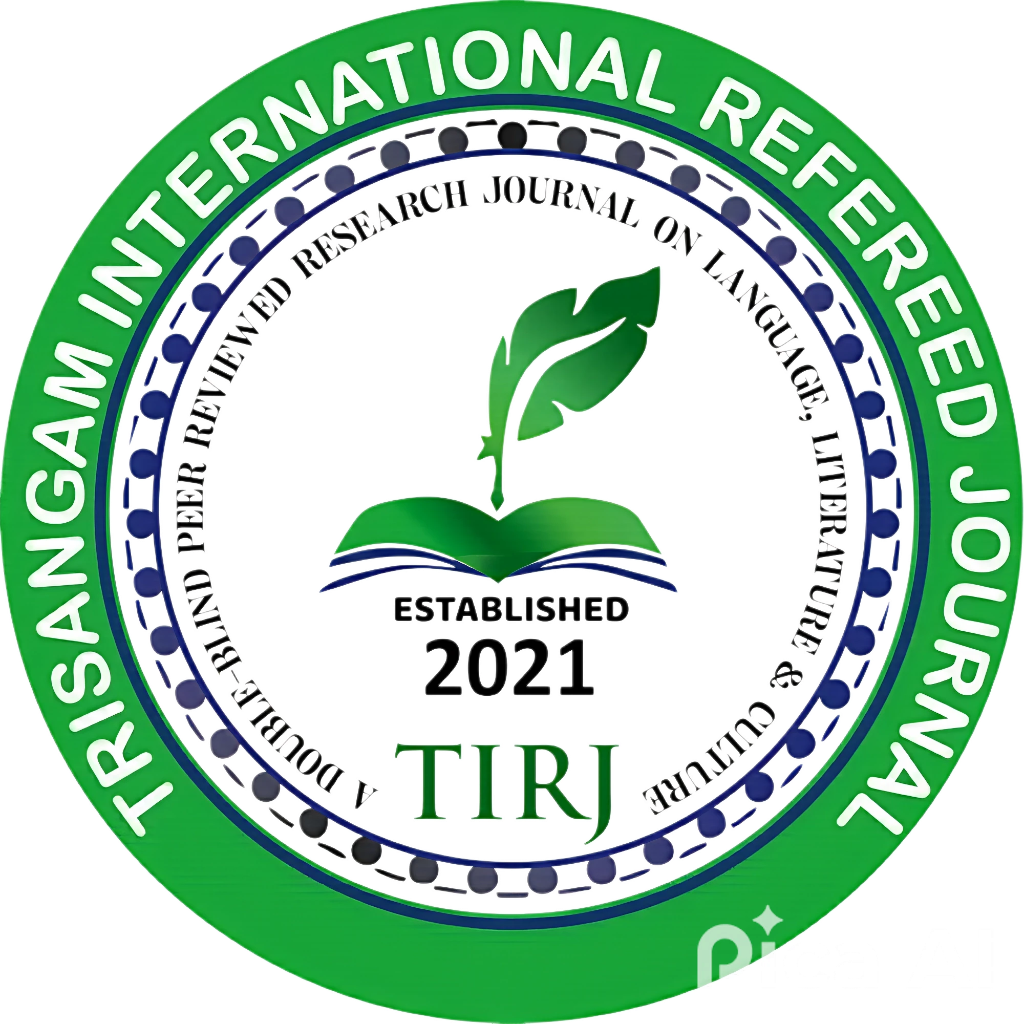Past and Present of Witchcraft in Purulia District: Context Santal Community/ পুরুলিয়া জেলায় ডাইনি প্রথার অতীত-বর্তমান : প্রসঙ্গ সাঁওতাল সম্প্রদায়
Keywords:
- Santal,
- Darwa,
- Joan of Arc,
- Jan Guru,
- Ojha,
- Lita,
- Pub and illiteracy
Abstract
At present, there are more than 705 aboriginal Communities in India. The Santal community is one of the third-largest groups. They mainly reside in the eastern states of India. In West Bengal, the highest concentrations are found in districts like West Medinipur, Bankura, Purulia, Jhargram, West Bardhaman, and Malda, particularly in areas like the Gazal Block. The practice of identifying individuals as witches (Daini) and the Related customs is a long-standing social issue among the Santals, which has been ongoing. While this practice existed among indigenous communities in India and abroad, over time, the term ‘Daini’ has become limited to fictional stories among mainstream populations both in India and outside. However, within indigenous groups, particularly the Santals, this practice has continued largely intact, continuing even after independence.
To limit the practice of witchcraft and witch identification, states with a significant indigenous population, such as Jharkhand, Bihar, Odisha, and Chhattisgarh, have enacted anti-witchcraft laws. However, no such law has been introduced in Purulia district or West Bengal. In this state, the issue of witchcraft and the related practices have been largely ignored or avoided as a social issue concerning indigenous Santal communities. Particularly in the southwestern part of West Bengal, in Purulia district, which is known for being drought-prone, the practice of labeling individuals as "Daini" has been prevalent even after independence.
The northern, southern, and eastern parts of Purulia district are primarily inhabited by Santal communities. In the northern region, areas like Kashipur, Nituria, and Saturi block; in the eastern region, areas like Hura and Puncha blocks; and in the southern area, regions like Manbazar 1 Block (two areas), Manbazar 2 Block (seven areas), and the Kaira area of Bandwan police station have a important Santal population. The period between 1960 and 1980 in these areas is known as the "Ojha, Sakha, and Jan Guru era," as during this time, there was widespread torture due to the identification of individuals as witches. However, from the 1980s, anti-witchcraft movements began, leading to some reduction in the practice.
This article attempts to explore the past and present context of witchcraft identification and practices within the Santal community in Purulia district. However, most of the discussion is based on secondary sources.
Downloads
References
১. রেভারেণ্ড. এল. ও. স্ক্রেফসরুড, হড় করেন মারে হাপড়াম ক রেয়াঃ কাথা, পশ্চিমবঙ্গ সাঁওতালি আকাডেমি, জানুয়ারী, ২০১০, পৃ. ২১৯, ২২৪
২. বন্দোপাধ্যায়, তারাশঙ্কর, ‘ডাইনি’, গল্পগুচ্ছ, (তৃতীয় খন্ড), জগদীশ চন্দ্র ভট্টাচার্য, (সম্পাদিত), সাহিত্য সংসদ, কলকাতা, ১৯৯৭, (পঞ্চম মুদ্রণ), পৃ. ১১৯, ১২০, ১২৪
৩. বাস্কে, ড. ধীরেন্দ্র নাথ, ছটরায় দেশ মাঝির স্মৃতি কথা, ১৮/১ শান্তি নগর, রিজেন্ত পার্ক, কলকাতা, মার্চ, ২০২১, পৃ. ৮, ১০, ১৫
৪. সেন, শুচিব্রত, ভারতের আদিবাসী: সমাজ, পরিবেশ ও সংগ্রাম (দ্বিতীয় সংস্করণ), বুকপোস্ট পাব্লিকেশন, ৭ নবীনকুণ্ডু লেন, কলকাতা, জানুয়ারি,২০২৪, পৃ. ৪৭১
৫. তদেব, পৃ. ৪৭২
৬. হেম্ব্রম, শ্রী মণ্ডল, সাঁওতাল সমাজে ডাইনী, সম্পাদনা, ড. সুহৃদ কুমার ভৌমিক, যাদুঘর, মারাং বুরু প্রেস, মেদনীপুর, ১৯৭৭, পৃ. ৪৬ – ৫০
৭. সরকার, লক্ষ্মীদ্রকুমার, পুরলিয়ার ডাইনী বিরোধী আন্দোলন, সঞ্চয়ন প্রকাশনী, কোলকাতা, (৪র্থ প্রকাশ), ২০০৭, পৃ. ৮৮, ৮৯
৮. তদেব, পৃ. 95, 96, 97
৯. তদেব, পৃ. 97, 98
১০. D. N. Majumdar, The Santal: A Study in Culture-Change. Printed by the Government of India Press, Calcutta, 1956, p. 114, 115
১১. Ibid, p. 52, 115
১২. কর্মকার, ড. জলধর, ঐক্য ভাবনায় সাঁওতাল সমাজ ও সংস্কৃতি, ট্যুরেন পাবলিকেশন, নিউ দিল্লী, ২০২১, পৃ. ১১৩-১১৬
১৩. কিস্কু, সারদা প্রসাদ, (খে বা), খেরওয়াল বাসিয়াওয়া কাহিনীক, আদিবাসী সাহিত্য প্রকাশনী, নর্থ ঘোষ পাড়া, বালী হাওড়া, ডিসেম্বর, ২০১৭ পৃ. ৭, ৮, ৯
১৪. সরকার, লক্ষ্মীদ্রকুমার, পূর্বোক্ত, পৃ. 108, 110–113
১৫. সরকার, লক্ষ্মীদ্রকুমার, সাঁওতালী ভাষা লিপি, ও সাহিত্যচর্চা ইতিবৃত্ত, সঞ্চয়ন প্রকাশনী, ১২১/এসীতারাম ঘোষ ষ্ট্রীট কলকাতা ৯, নবম একাদশ স্নগস্করণ, ২০১৮, পৃ. ৩৮০-৩৮২
১৬. সরকার, লক্ষ্মীদ্রকুমার, পূর্বোক্ত, পৃ. ১১৬-১১৯
১৭. সরকার, লক্ষ্মীদ্রকুমার, পূর্বোক্ত, পৃ. ১৩৬-১৪১
১৮. সরকার, লক্ষ্মীদ্রকুমার, পূর্বোক্ত, পৃ. ১৭৩-১৭৫, ১৯৫
১৯. সরেন, গোমস্তা প্রসাদ, ফিরে দেখা (দ্বিতীয় খন্ড), ১বি/৬৬ জয়দেব এভিনিউ, দূর্গাপুর, মার্চ, ২০১৫, পৃ. ১, ৪-১০
২০. তদেব, পৃ. ১৫, ১৬, ১৭






